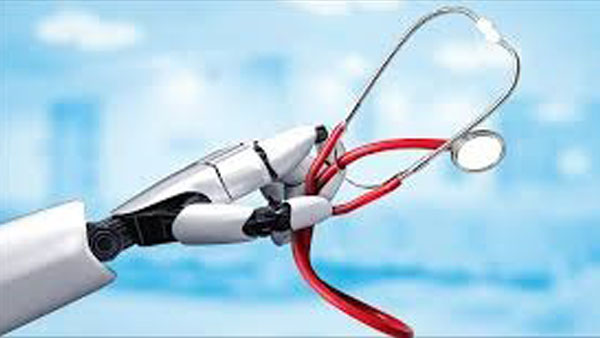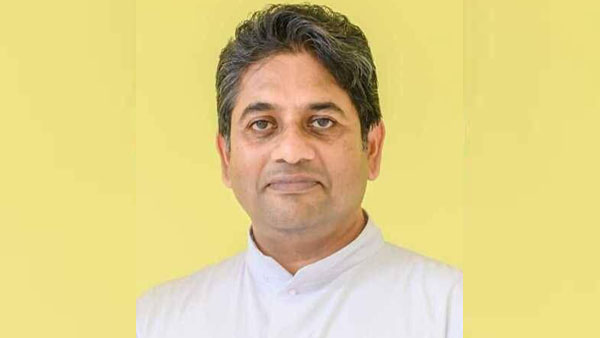By Satyabrat Borah
India faces a severe shortage of doctors, with far fewer physicians per person compared to countries like Myanmar, Pakistan, or even Cuba, which has thrived medically despite decades of economic challenges. The situation is especially grim in rural India, where finding a doctor is as difficult as in some of the world’s most underserved regions. The question is, how long would it take for India to build a doctor workforce comparable to a country like Brazil, which has a significantly stronger healthcare system? More importantly, with artificial intelligence (AI) rapidly advancing, will India even need that many doctors in the future, or could AI reshape the role of physicians entirely?
To reach a doctor-to-population ratio like Brazil’s, India would need a massive increase in its medical workforce. Training doctors is a lengthy process, requiring years of education and practical experience. Even if India significantly boosts its medical school output, producing thousands more doctors each year, it would likely take several decades to close the gap. This timeline assumes steady progress without setbacks like brain drain, where doctors leave for better opportunities abroad, or uneven distribution, where urban areas remain better served than rural ones. The scale of the challenge suggests that simply training more doctors may not be the fastest or most practical solution.
This brings us to the transformative potential of AI in healthcare. Advances in AI are already changing how medicine is practiced, and experts like Robert Wachter, a prominent figure in academic medicine, argue that AI could soon play a central role. In his book A Giant Leap, Wachter explores the idea that AI might evolve from a tool assisting doctors to, in some cases, the primary point of care for routine medical needs. This is particularly relevant for India, where the shortage of doctors, especially in rural areas, leaves millions without access to basic healthcare.
The concept of AI in medicine isn’t new. In the 1970s, early attempts to use AI for diagnosis failed because the technology was too limited and the goals too ambitious. Decades later, IBM’s Watson supercomputer, which gained fame for outsmarting humans in a trivia game, sparked hope for healthcare applications. Despite significant investment, Watson stumbled, notably when it made a dangerous treatment recommendation for a cancer patient. These failures underscored the high stakes in medicine, where errors can be life-threatening.
Today, the landscape has shifted. Recent AI advancements have made experts like Wachter more optimistic. AI excels at analyzing vast amounts of data and identifying patterns, a skill well-suited to diagnosing illnesses. By learning from countless patient records, AI can connect symptoms to likely causes with impressive accuracy. Studies show AI performing as well as top medical professionals on challenging diagnostic tests, suggesting it could handle routine consultations, especially in areas with few doctors. This could be a game-changer for rural India, where patients often travel far for care or go without it entirely.
AI is also showing an unexpected ability to mimic human qualities like empathy. Research indicates that AI-generated responses to patient queries can sometimes feel more compassionate than those from human doctors. This stems from AI’s ability to craft tailored, thoughtful replies based on learned communication patterns. While AI cannot genuinely feel empathy, its ability to simulate it could make it a viable option for initial patient interactions, particularly in resource-scarce settings.
The potential for AI to address India’s doctor shortage is significant. Startups, including those led by innovators of Indian origin, are developing AI systems to handle basic medical tasks, such as diagnosing common ailments or recommending treatments based on established guidelines. These tools could be deployed via mobile apps or community kiosks, bringing healthcare to remote areas. By providing virtual consultations, AI could ease the burden on overworked doctors and improve access to care for millions.
But Integrating AI into healthcare comes with challenges. AI systems can inherit biases from their training data, leading to inaccurate results if the data doesn’t reflect diverse populations. For instance, an AI trained on urban hospital records might struggle with conditions common in rural areas. Another issue is the risk of AI generating convincing but incorrect information, known as hallucinations. A single misdiagnosis could damage trust in AI and halt progress. These concerns explain why AI hasn’t yet revolutionized medicine, despite strong incentives. In countries like the United States, where healthcare costs consume a significant portion of the economy, and in India, where rising costs and doctor shortages strain the system, the drive to adopt AI is clear. Yet, caution remains paramount, as one high-profile failure could set back adoption.
For now, AI’s role in medicine is mostly supportive, tackling time-consuming tasks like summarizing patient records or managing appointments. By automating these, AI frees doctors to focus on patient care, which is critical in India’s overburdened public hospitals. The ultimate goal of AI-driven diagnosis is still on the horizon, as companies prioritize safety and accuracy. The stakes are too high for rushed deployment, but progress is steady.
The timeline for AI to transform healthcare depends on overcoming these hurdles. Wachter suggests that roles heavily reliant on pattern recognition, like radiology or pathology, could see significant automation within a decade. For general physicians, the shift will likely take longer, as their work involves complex decision-making and patient interaction. In India, AI could play a complementary role sooner, especially in underserved regions. By handling routine cases, AI could reduce the need for an unattainable number of new doctors, allowing India to focus on training specialists for complex care.
The implications for India’s healthcare strategy are profound. Instead of aiming to match Brazil’s doctor numbers, India could invest in a hybrid system, combining a smaller, highly skilled physician workforce with widely accessible AI tools. This would require robust digital infrastructure, including reliable internet in rural areas and secure data platforms. Regulations would also need to ensure AI systems are safe and equitable. Medical education might evolve too, preparing doctors to collaborate with AI, leveraging its analytical strengths while providing the human judgment machines lack.
Wachter’s point that today’s AI is the least advanced it will ever be highlights the rapid pace of innovation. As AI improves, its role in healthcare will grow, potentially transforming India’s ability to address its doctor shortage. While training enough doctors to rival Brazil’s system could take decades, AI offers a faster, more scalable solution. By thoughtfully integrating AI, India could not only improve healthcare access but also lead the way in using technology to solve global challenges. The future of medicine likely lies in a partnership where AI and human doctors work together, ensuring better care for more people, especially where doctors are scarce.




